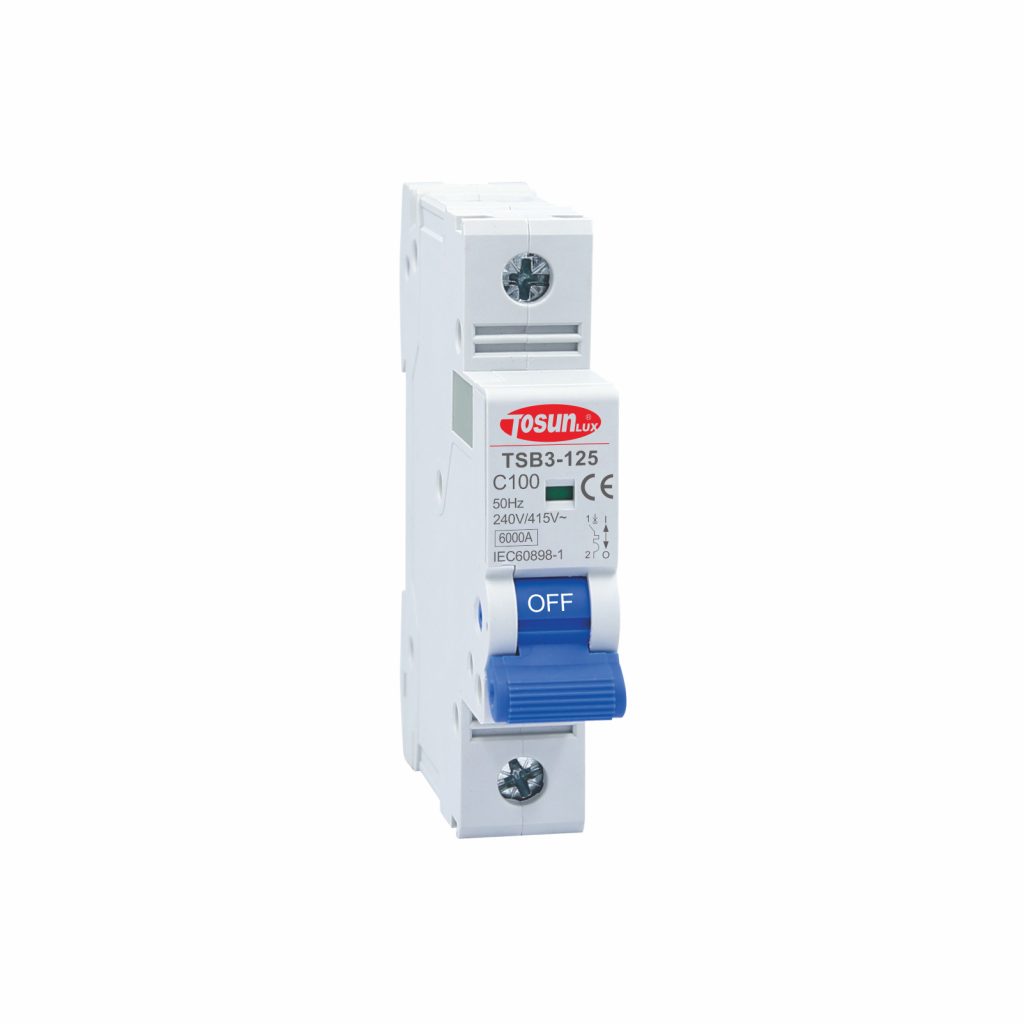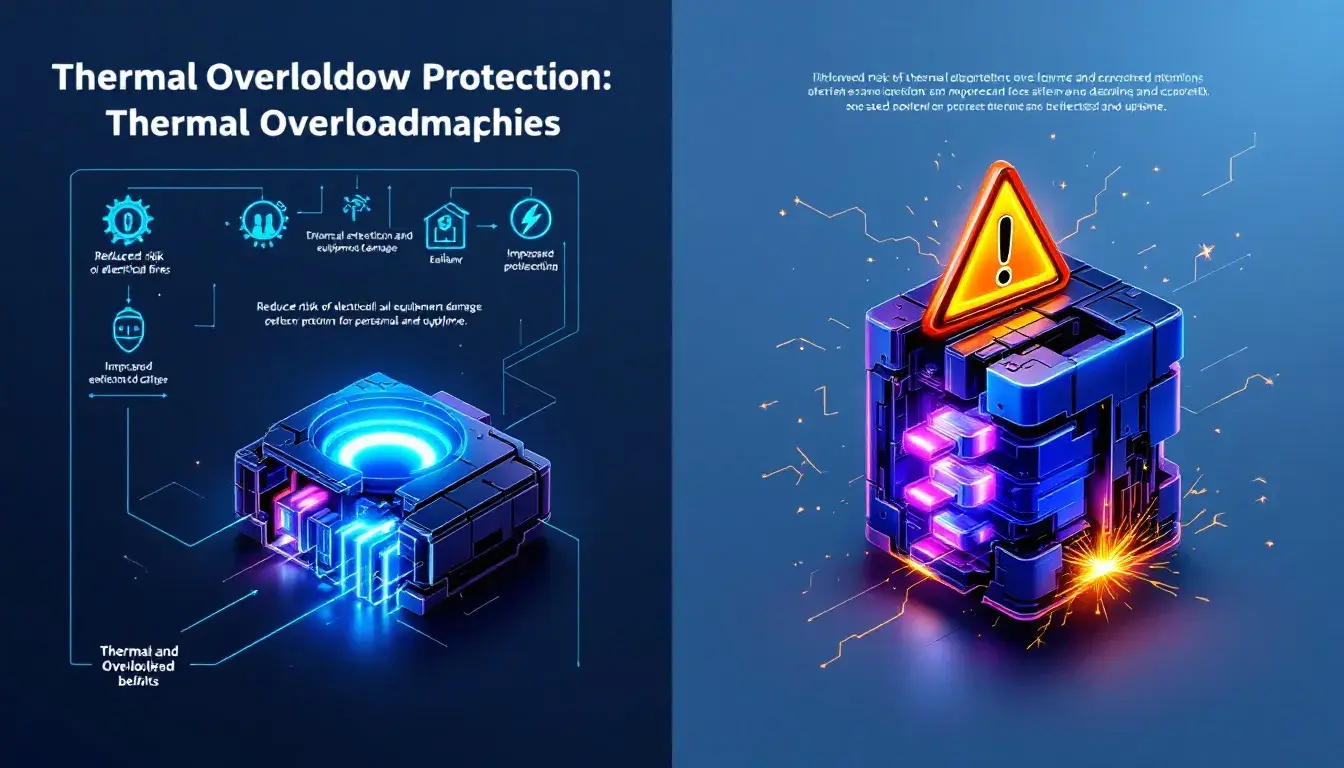How to Select A Miniature Circuit Breaker?
Table of Contents
ToggleOverload of power or power surge can cause major damage to the electric circuit, appliances, and other property.
In order to prevent damage, MCB or miniature circuit breaker is used. As the name goes, it helps to break the flow of current in the circuit, thereby protecting against power overload.
However, there are different types and variations of MCBs available in the market. You need to choose the right one for complete protection.
In this guide, we will explain to you about miniature circuit breakers and help you to select the right device.
What Is A Miniature Circuit Breaker?
A miniature circuit breaker (MCB) is an automatic switch that stops the flow of electricity when it detects a fault, protecting electrical circuits from overloads and short circuits. MCBs are essential for preventing electric shocks and damage to electrical equipment. They work by using a bimetallic strip that bends and trips the switch when overheated, stopping the current. Once cooled, the switch resets. MCBs are crucial in both residential and industrial settings, offering safety and protection. Many have built-in surge protection, making them suitable for various applications, ensuring maximum safety
What are Poles in Circuit Breakers?
When we talk about poles in circuit breakers, we’re referring to the number of separate circuits that a breaker can protect. Here’s a simple breakdown:
- Single Pole: This type of circuit breaker is used for 120V circuits and is common in residential settings. It protects one wire and is typically used for standard lighting and outlet circuits.
- Double Pole: These breakers are used for 240V circuits and protect two wires. They’re ideal for larger appliances like ovens and dryers, ensuring maximum safety by handling more power.
- Triple Pole: Found in industrial applications, these breakers are used for three-phase power systems, protecting three wires. They are crucial for heavy machinery and large electrical installations.
- Four Pole: These are used in complex systems that require additional protection, often in commercial and industrial settings.
Understanding the number of poles helps you choose the right circuit breaker for your needs, ensuring safety and efficiency in your electrical installations.
How To Select A Miniature Circuit Breaker?
Here are some of the things you need to consider in order to select a miniature circuit breaker
- Rated Current: It is the amount of current the circuit can handle. It can withstand currents from 0.5A to 125A. So, you need to check the power supply of the circuit and accordingly choose an MCB as per the power.
- Number of Poles: There are different types of MCBs available as per the number of poles, i.e. single, single pole and neutral, double, triple, and four poles. You need to consider the phase and neutral to choose an MCB.
- Tripping Characteristics: It shows the tripping time required by the MCB. The tripping range differs from one MCB to another. So, you need to check the tripping class of the device. You can choose from the B curve, C curve, D and K curve, and Z curve.
- Rated Operational Voltage: It is the voltage required for the MCB to function. It is the maximum value. As different MCBs have different operational voltages, you need to choose them accordingly.
- Breaking Capacity: It is the current that the device can carry and break. You need to choose a low-breaking capacity MCB for household use.
Summary
This article provides a comprehensive guide on selecting the right miniature circuit breaker (MCB) for various applications. It covers the importance of considering factors like rated current, number of poles, tripping characteristics, operational voltage, and breaking capacity to ensure maximum safety and protection of electrical circuits. For expert advice and quality MCBs, contact TOSUNlux, a trusted supplier, to ensure your electrical systems are safeguarded against overloads and short circuits.
Tel: +86-577-88671000
E-mail: ceo@tosun.com
Skype: tosunelectric
Wechat: +86-139 6881 9286
WhatsApp: +86-139 0587 7291
Address: Room No.1001 Wenzhou Fortune Center,Station Road, Wenzhou, China
REQUEST A QUOTE
WhatsApp us
 : +86-139 0587 7291
: +86-139 0587 7291 English
English Español
Español Русский
Русский Français
Français العربية
العربية Português do Brasil
Português do Brasil Українська
Українська Türkçe
Türkçe Polski
Polski Nederlands
Nederlands Italiano
Italiano Bahasa Indonesia
Bahasa Indonesia हिन्दी
हिन्दी اردو
اردو አማርኛ
አማርኛ Հայերեն
Հայերեն ไทย
ไทย Монгол
Монгол فارسی
فارسی Shqip
Shqip Ελληνικά
Ελληνικά



